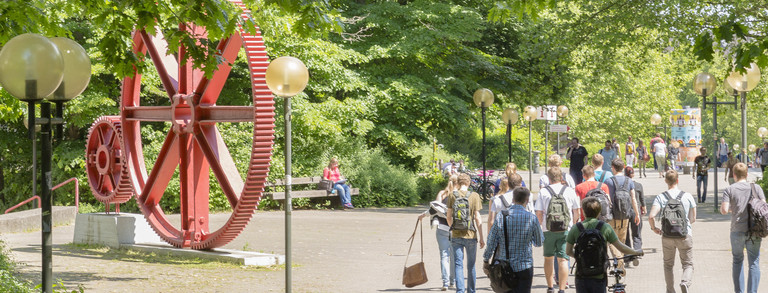Emeritus Prof. Dr. techn. Peter Walzel
Contact
Telephone
(+49)231 755-5954
Address
Department of Biochemical and Chemical Engineering
Laboratory of Solids Process Engineering
Emil-Figge-Str. 68
44227 Dortmund
Curriculum Vitae
Professor Peter Walzel has studied "Verfahrenstechnik" at the TU Graz and obtained his PhD with the theme „Vibrationsausfrieren von Eis aus wässrigen Lösungen“ at the chair of "Apparatebau und Mechanische Verfahrenstechnik" in 1976. Then he was a scientist for 4 years at the "Fachgebiet Apparatetechnik" at the university GH in Essen, since 1979 he was senior engineer.
During his 13-year work in industry at the Bayer AG Professor Walzel habilitated 1984 on the subject „Apparate der Verfahrenstechnik“ at the university GH in Essen. He was an Assistent Professor in 1990 and since 1993 he was head of the chair for "Mechanische Verfahrenstechnik" and since 1995 additionally for "Apparatetechnik" at the university GH in Essen.
Since oktober 1999 he is Professor at the Laboratory of Mechanical Process Engineering at the Technical University in Dortmund. Between 2003 and 2007 he was dean of the department of Biochemical- and Chemical Engineering at the TU Dortmund. Since March 2009 Professor Walzel is president of the ProcessNET-Section „Multi Phase Flow“.
Research
Spray Processes and Applications
Projects on sprays are dealing with the fundamentals of drop formation and the design of improved nozzle and atomizer equipment. Spraying devices are applied mainly in spray driers, scrubbers and coating systems. One of the objectives is to simultaneously provide robust devices anyhow capable to produce sprays with narrow drop size distributions. Our lab has been working on several DFG (German Research Community) funded projects in this field for the past ten years, and has carried out many projects for industrial partners
Transport, Mixing and Separation of Granular Materials
Experiments and DEM simulations are conducted explaining the behavior of granular materials on vibrating conveyors and in rotary drums. Color-selective concentration measurement are applied to read the local concentrations and the transient state of mixing even in the depth of larger quantities of bulk solids. Particle segregation can be utilized for classing or sorting. Different types of equipment and concepts are pursued for that purpose.
Dust Removal from Gases
Improved design of electrostatic filter rearranging the flow pattern reduces the residual dust content of the scrubbed gas and increases the effectiveness of the separators. Modified and improved methods to measure the electrical conductivity of dusts allows for voltage control and to avoid back-sparking together with re-dispersion of deposited particles. Our work also focuses on combinations of spray scrubbers and electrostatic filters which are jointly optimized particularly for unsteady running conditions.
Emulsifying technique
The production of dispersions with uniform and small drop sizes can also be achieved in laminar flows, i.e. viscous media, by using appropriate nozzle geometries applying the Rayleigh break-up to liquid threads significantly elongated before breakup.
Process intensification
Low-frequency, i.e. f < 200 Hz pulsations, superimposed to laminar duct flows can be maintained even within long channels. They lead to high wall shear on smooth walls preventing the deposition of particles as on filter layers. Inserts with extensions perpendicular to the main flow give rise to intensive local mixing, disturbing the boundary layer and contributing to significant increase in transport processes across membranes and heat exchanger surfaces. The basics for increased transport coefficients are being developed.

